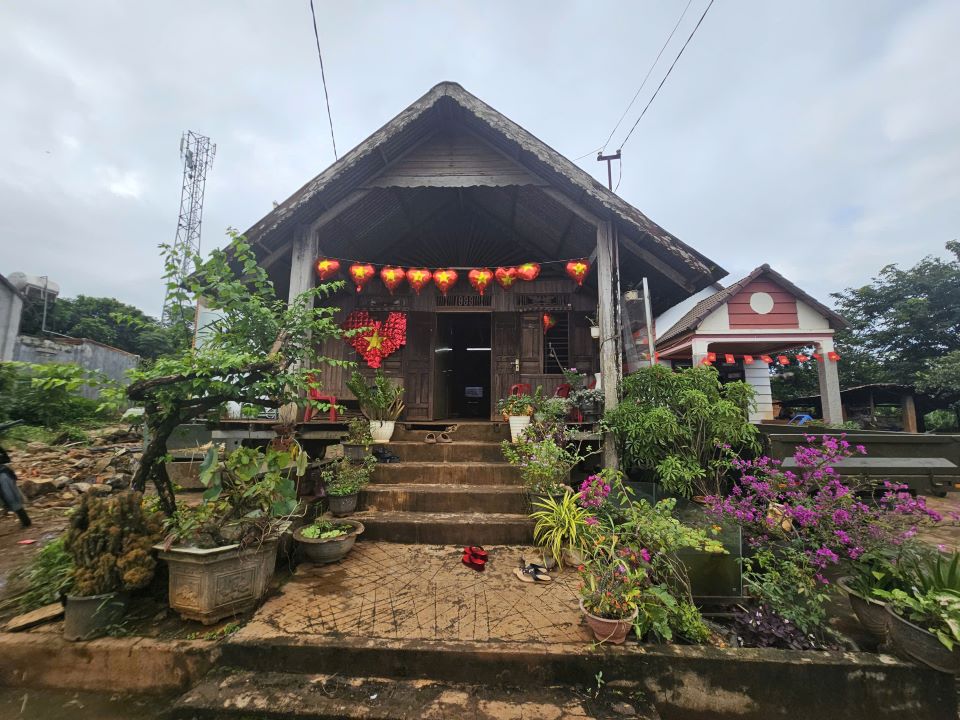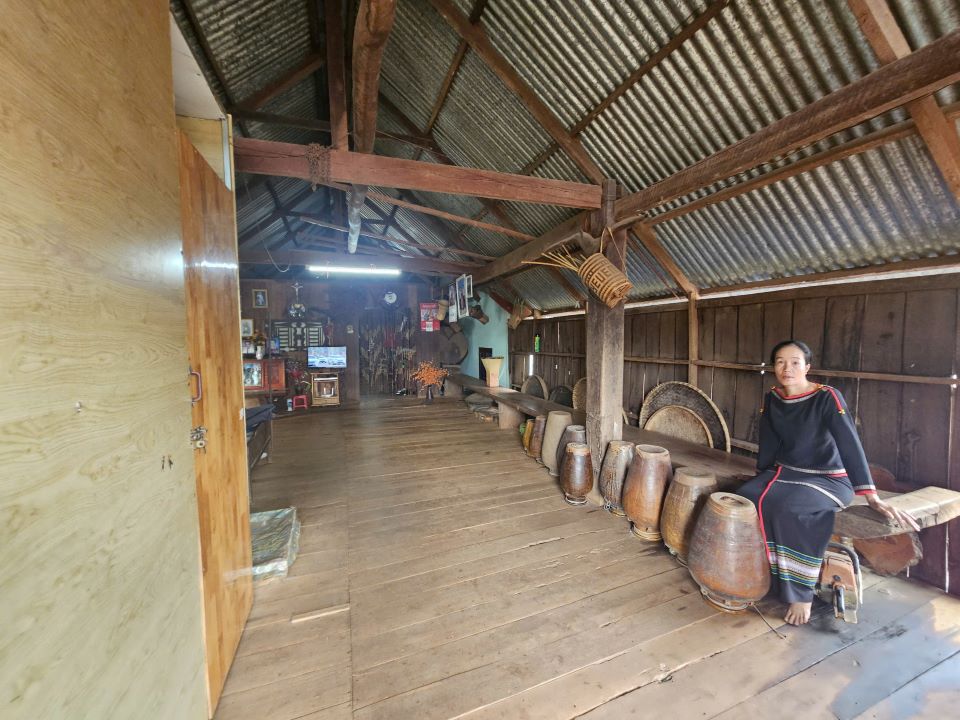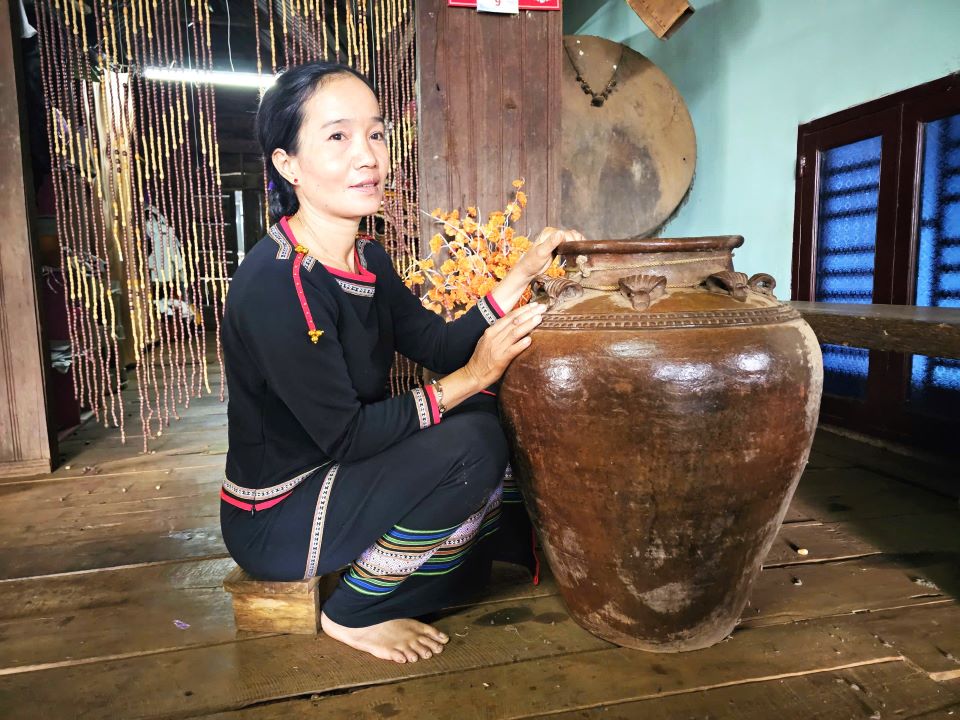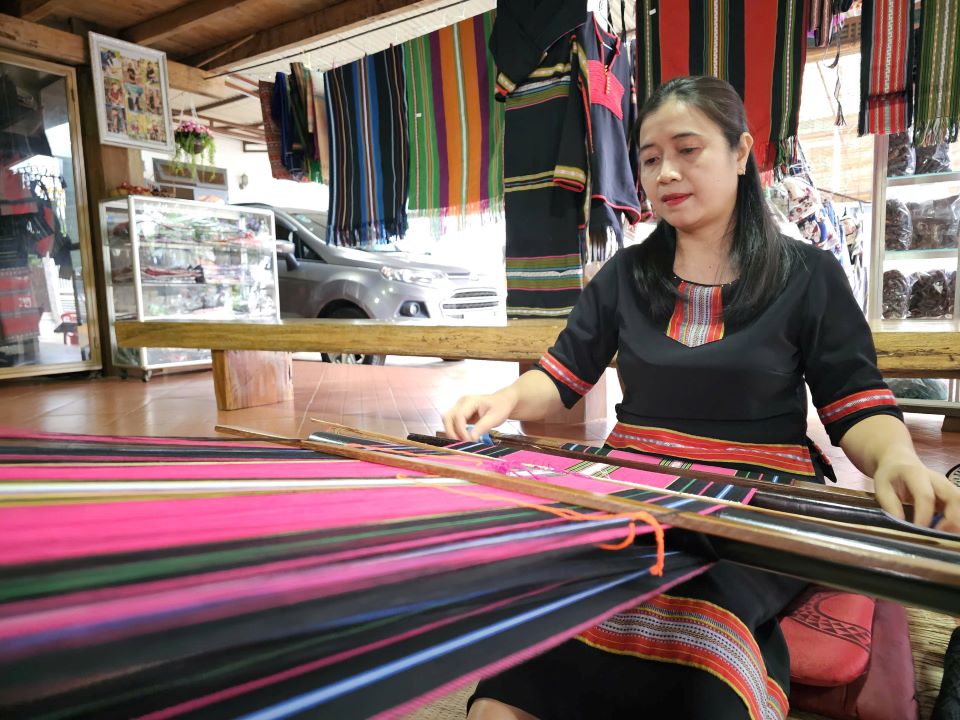Cultural assets in a long house
Entering the long house of Ms. H'Vinh Ennuol's family (Ea Bong village, Buon Ma Thuot ward, Dak Lak), many people could not help but admire the artifacts bearing the traditional cultural imprint.

Notable are the four long robes - a symbol of power and wealth in the ancient Ad community. In which, the oldest chair is up to 15 meters long, passed down from the ancestors, the pride of the entire clan.
Not only that, the house also preserves the bronze gong set and a large buffalo drum items that only appear during important festivals in the village.

Ms. H'Vinh shared that this drum was once exchanged for a big, strong buffalo, an irreplaceable breeding ground, even though many people paid a high price to buy it back.
Her family also owns three ancient bronze pots, one of which was stolen, which made her regret. Although she was paid a very high price for these items, Ms. H'Vinh always refused. Because for her, these objects are the culture and soul of the End people.

Not only preserving artifacts, Ms. H'Vinh's family also maintains a traditional lifestyle. The long house is not only for living, but also a cultural space - where the fire is always red, where children and grandchildren hear old stories, learn to cook traditional dishes.
Although modern life, I still want my children and grandchildren to understand and be proud of the culture of the Ende ethnic group. Maintaining culture is preserving the roots and soul of the village", Ms. H'Vinh shared.
Brocade - love woven from hands
Ms. H'Min Nie (akron Khong village, Buon Ma Thuot ward, Dak Lak) grew up listening to the curse and love of the profession from her mother.
Since her childhood, she has been passionate about watching her grandmother weave brilliantly patterned fabric, where each felt is woven not only by hand but also by passion and pride.
When asked about the job of weaving brocade, Ms. H'Min shared: "This job is not easy. Sitting for hours next to the weaving frame, my back often hurts, but my passion never goes out".

Ms. H'Min is proud of the traditional profession that she is preserving. This further deeps her love for each product she creates.
Ms. H'Min Nie said that the costumes of the people of the Ades are often mainly red and black, with rich patterns.
Each pattern contains its own story and meaning, turning brilliant brocade into a bridge between the past and the present.
Those patterns are not just decorations, but also vivid memories of the villages, of the cultural values that the End ethnic group has preserved through many generations.
Not only continuing the traditional profession, she also brings brocade to the market through products such as clothes, hats, and handbags.
Ms. H'Min feels happy to receive love and positive feedback from tourists about her products.
When I see people loving my product, I feel like my efforts have been rewarded, she shared with a bright smile.
For her, every day sitting in weaving is a day I relive with my own memories. Thanks to weaving, her family has an additional income. Moreover, she is happy to contribute to preserving national identity.
Each brocade woven by Ms. H'Min is a journey, a story about love for the homeland as well as national cultural values.






